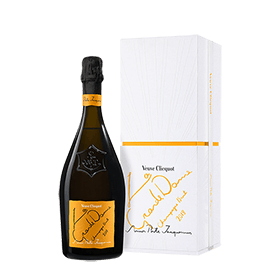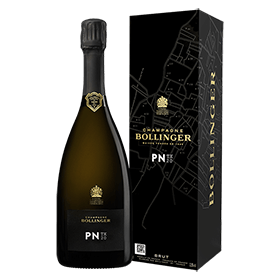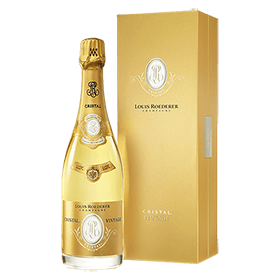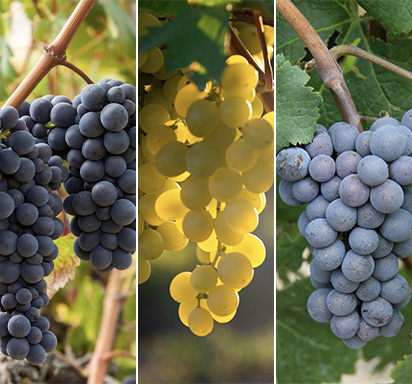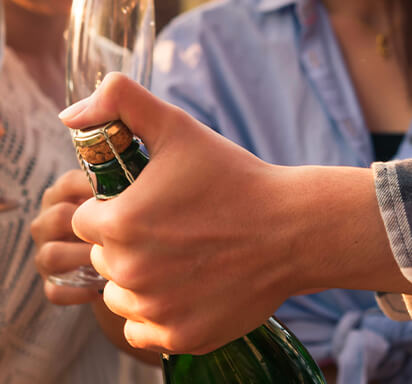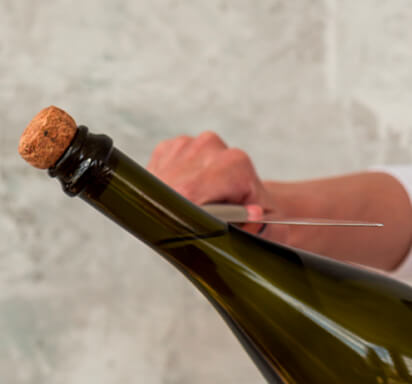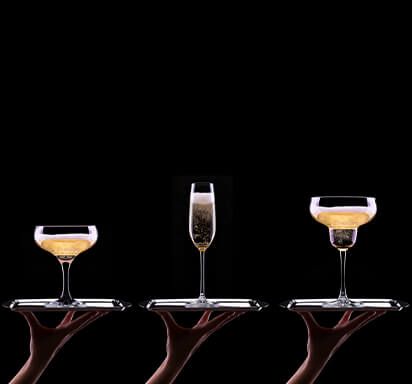How to store Champagne: Our top storage tips
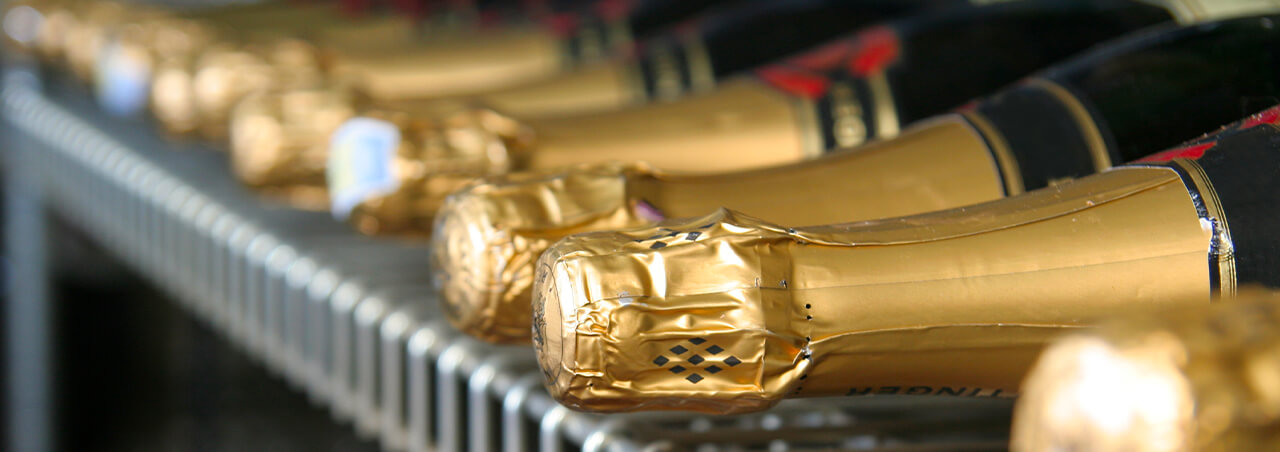
What is the best way to store Champagne or sparkling wine for the short or long term? Find here best storage practices, which will help keep your bottle of bubbly Champagne or sparkling wines fresh for as long as possible.
The ideal choice for any celebration, it never hurts to have a case or bottle of Champagne on stand-by. After all, this beloved style of sparkling wine is the most popular choice for weddings, birthday parties and life’s special occasions. But what is the best way to store Champagne or sparkling wine for the short or long term? Which are the best bottles to choose for long-term aging in your cellar? And how should one store Champagne once it’s opened?
In this article we discuss best storage practices, which will help keep your bottle of bubbly Champagne or sparkling wines fresh for as long as possible.
CONDITIONS FOR LONG-TERM STORAGE (ONE MONTH OR LONGER)
No fine wine collection is complete without a bottle or two of good quality Champagne. But how does one keep Champagne bubbly over the course of long-term aging in the bottle? When storing Champagne in your home for one month or longer, take care to meet some storage requirement conditions, which include proper temperature, humidity, lighting and bottle orientation. If you do not have a dedicated wine fridge, a cool basement can also do the trick!
• The Ideal Temperature
When deciding how to store Champagne bottles, temperature certainly matters. We recommend storing Champagne at a constant temperature of 55 degrees Fahrenheit or at least between 45° and 65°F. If temperatures rise above 70°F, the wine can degrade. If it falls under 45°F, the cork may shrivel and allow oxygen into your Champagne bottle, which will oxidize and destroy the liquid inside. The latter is the reason why not to ever keep Champagne in the freezer.
Even more important than the exact temperature at which your Champagne is kept is that the temperature remain more or less constant. Extremely fluctuations in your Champagne will cause it to expand and contract, leading to seepage through the cork. This is why Champagne should never be kept in the fridge, where temperature fluctuations result from opening and closing the door.
• The Ideal Humidity
When storing Champagne on the long term, humidity also matters. The ideal conditions, found in most wine fridges, include 70-85% humidity. A cool underground basement can easily replicate these conditions. Sufficient humidity keeps the cork from drying out and prevents oxidation or seepage.
• The Ideal Lighting
Champagne stored in the ideal lighting is Champagne stored in the dark, away from any artificial or sunlight exposure. This is because sunlight can alter the internal temperature of your sparkling wine, leading to off-flavors over time. Yet another reason for why not to keep your Champagne in the fridge, where an artificial light turns on each time the door is opened…
• The Ideal Bottle Orientation
As is the case with most wines, Champagne bottles should be stored on their sides. This allows for constant contact between the liquid and cork, which will keep the cork moist and prevent it from shrinking. Remember: if the cork shrinks, wine can seep out of the bottle or oxygen can seep in and ruin your precious Champagne.
VINTAGE CHAMPAGNE VS NON-VINTAGE CHAMPAGNE
For avid wine collectors seeking to purchase fine Champagne for long-term aging, we strongly recommend vintage Champagne. These cuvées are made with grapes harvested in the same year rather than a blend of different vintages in the case of their non-vintage counterparts. Vintage champagnes also must be aged for a minimum of 3 years in the bottle, while non-vintage Champagnes age a minimum of 15 months.
Extended bottle aging on lees (dead yeast cells) lends vintage champagnes remarkable complexity and structure, allowing them to take on long-term aging in your cellar with grace. As a rule of thumb, most non-vintage champagnes will age for 3-4 years in your cellar, whereas vintage champagnes can be stored for 5-15 years if stored properly. A great example for an age-worthy vintage champagne is Dom Perignon Champagne.
MAGNUM BOTTLE VS STANDARD BOTTLE
Trying to choose the right bottle format for long-term storage in your cellar? We recommend the Magnum Champagne bottle. While the standard bottle (750mL) will allow your Champagne to age nicely when properly stored, the Magnum bottle (1.5L) is ideal for long-term aging. Larger bottlings, like the 3-liter Jeroboam will also age gracefully in your cellar, ready to be uncorked for your large get together.
This is because the ullage (ratio between the surface area of the wine and the volume of air in the bottle) is lower, allowing for a slow and steady aging process. This leads to a more gradual development of tertiary aromas, along with greater overall complexity and structure and finer bubbles in the bottle. The right Champagne will age and evolve in a Magnum bottle for 20 to 30 years. Discover all the different Champagne bottle sizes!
OUR TIPS FOR SHORT-TERM STORAGE (LESS THAN ONE MONTH)
If you’re planning to open your bottle of Champagne in the next few weeks, we recommend storing it at a temperature between 50° and 59°F and keeping it away from direct sunlight. In this case, you may store the bottle upright, as the cork will probably not dry out in less than one month and storing a bottle vertically helps avoid cork taint.
HOW LONG CAN YOU STORE AN OPEN BOTTLE OF CHAMPAGNE?
But what should you do if you do not manage to finish the entire bottle and wish to save the leftover Champagne? An open Champagne bottle can only retain its freshness for around 3 to 5 days. This is because the bubbles dissipate over time, leaving the liquid flat. Generally, it’s best to drink Champagne soon after opening the bottle.
However, it is possible to store opened Champagne bottles for up to five days by sealing the lip of the bottle with a Champagne stopper, airtight cork or simple plastic wrap. This blocks the bubbles from leaving the opened bottle of Champagne and keeps your wine fresh and fizzy for as long as possible. Learn more about the maximum aging time of Champagne by discovering our article “How long does Champagne last!”
Are you asking yourself “Where can I find champagnes near me?” Take a look at our complete online selection or visit our NYC boutique. Our expert team of wine lovers will guide you toward the perfect bottle and answer any questions you may have about how to age champagne.
You may like
Unveil the unique characteristics of Champagne Blanc de Blancs and Blanc de Noirs. Learn how these two styles differ in flavor, grape varieties, and food pairings to elevate your Champagne experience.
12/19/2024Discover how Chardonnay, Pinot Noir, and Pinot Meunier shape the distinct character of Champagne. Learn about rare grape varieties and explore notable examples from top producers in the world’s most famous sparkling wine region.
7/4/2024To help you safely open a bottle of bubbly, we have put together a guide with 6 simple steps. Learn more about when to open a bottle of Champagne and how to do it in the safest and most graceful way.
3/11/2023A swift swoop of the knife along the neck of the bottle, followed by a “pop!” as the glass shatters and the “hiss” of the Champagne as it flows out. There is no more festive way of opening a bottle of Champagne than by sabering it
3/8/2023Guardian of the bottle and the precious bubbly inside, the cork serves an essential role in the preservation of Champagne. Over the years, it has evolved and adapted to this very special role.
3/6/2023There is something truly special about opening a bottle of Champagne or sparkling wine. But have you ever wondered what sets apart Champagne from sparkling wineslike Prosecco, Cava and Lambrusco?
2/20/2023
